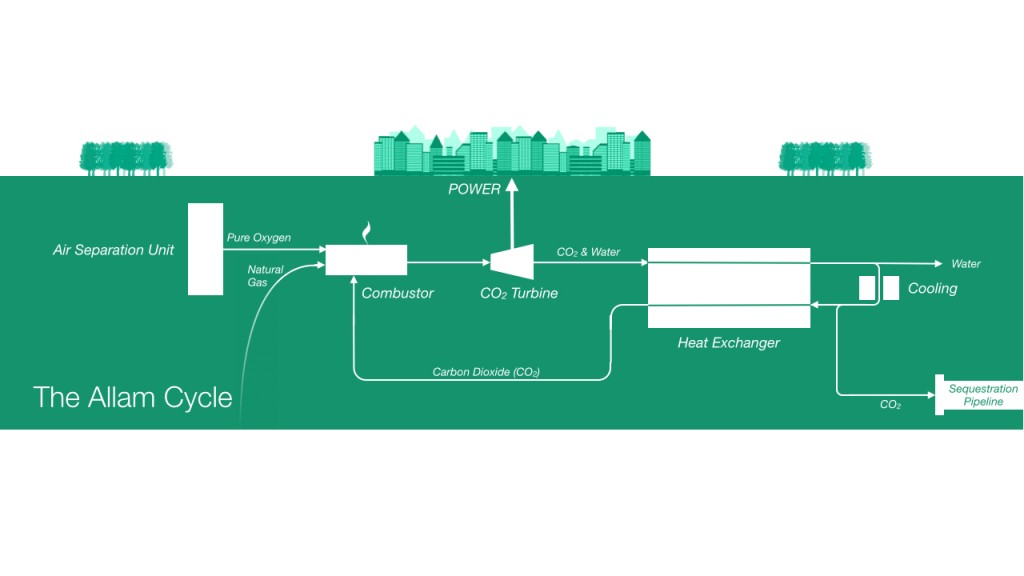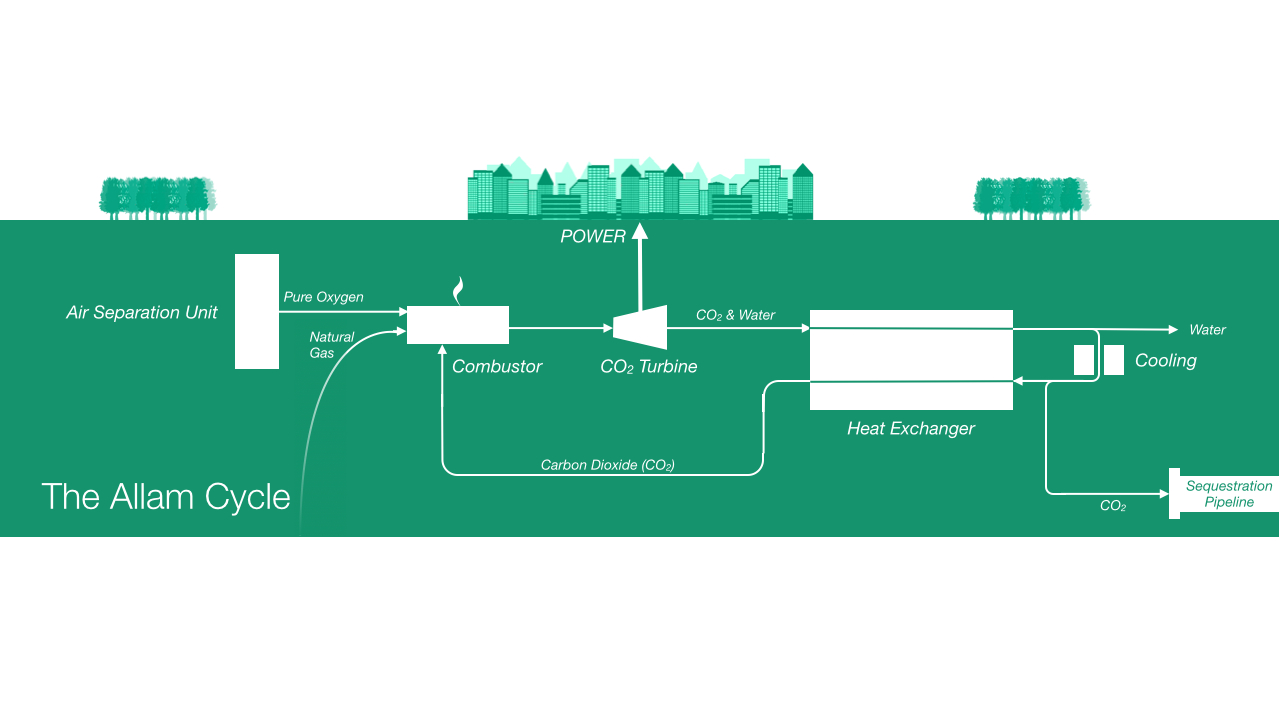November 19, 2014 – The first natural gas power plant that completely captures carbon is about to be constructed by NET Power, a Durham, North Carolina company. The 50 Megawatt facility is being built in Texas and will go online in 2016 at a cost of $140 million U.S.
The zero emission technology used is The Allam Cycle, an oxy-combustion process that separates oxygen from the atmosphere and combines it with natural gas and carbon dioxide (CO2) under high pressure. Other natural gas plants burn fuel in ambient air which is almost 80% nitrogen. This produces an unwanted byproduct, nitrous oxide, a potent greenhouse gas and pollutant.
 Water is the only other byproduct of combustion. It initially is steam and condenses when exiting the combustion chamber. The compressed CO2 is the energy driver. When it leaves the combustion chamber the force created turns the turbine which is attached to a power generator. The used CO2 passes through to a heat exchanger and loops back to the combustion chamber where it can be reused. Any excess pressurized CO2 gets fed into a pipeline to be permanently pumped and sequestered underground.
Water is the only other byproduct of combustion. It initially is steam and condenses when exiting the combustion chamber. The compressed CO2 is the energy driver. When it leaves the combustion chamber the force created turns the turbine which is attached to a power generator. The used CO2 passes through to a heat exchanger and loops back to the combustion chamber where it can be reused. Any excess pressurized CO2 gets fed into a pipeline to be permanently pumped and sequestered underground.
Unlike traditional natural gas power plants there is no gaseous excess outflow or requirement for post-capture of emissions. So no smokestack and no expensive scrubbers. And though water is a byproduct of the process, no water is initially needed which is a good thing in the persistent long-term drought impacting Texas.
NET Power has the ability to substitute natural gas with other fossil fuels, notably coal. Fundamentally a plant burning coal would use the same process with a coal gasifier added to the front end. Traditional coal-fired power plants burn the coal to boil water to produce steam. Using Allam Cycle technology no water is required, and the power plant, using oxy-combustion would produce no nitrous oxide or sulfur dioxide, a common byproduct of traditional coal-burning plants. Testing of different types of coal fuel is ongoing with great preliminary results obtained from burning of both bituminous coal and lignite (brown coal).
For traditional fossil fuel energy companies the technology NET Power has devised could be the answer they seek to ensure that current in-ground assets can still be of value in a low carbon economy. Instead of contributing negatively to climate change, they will finally have a technology that provides the much needed always available energy that is not possible solely relying on solar and wind renewables.










